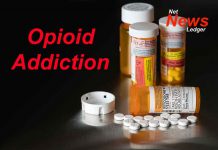With so many people dealing with addictions in their life, it makes perfect sense that professionals (doctors, therapists, recovery coaches, and people around the addicts) would seek better ways of eliminating addiction in one’s life.
For years people thought that a method should give the same results in several patients, but it became apparent that there are no one-size-fits-all methods when it comes to solving addiction. Professionals realized that any process should also take the particularities, values, and personality into consideration when developing a rehab system.
Long story short, some principles have to be respected so that a rehab method is efficient.
1. No single method works for all patients
It’s beyond a doubt that a technique only works when the type of drugs and particularities of the patient are considered. Any treatment, service, or intervention has to match one’s profile and problems. No method is going to give results for the long run that the patient can integrate into their after rehab life unless it is adjusted to the patient’s profile and specifics.
2. Addiction is a chronic disease
For years, addiction wasn’t considered to be a disease. Once people in the medical environment decided to approach as a disease, the methods have improved dramatically.
It took a while for a scientist to realize that drugs of abuse damage the brain’s function and structure, leading to changes that will last many years after the addiction has stopped.
It explains why people with drug addiction are prone to relapse even after a long time of abstinence, regardless of the harmful consequences.
3. Efficient methods work on multiple levels
In order to be productive, a rehab system would have to meet one’s needs on various levels. It has to address one’s particularities in terms of social, medical, psychological, legal, vocational, and physical level.
The ethnicity, culture, age, and genders cannot be skipped when addressing one’s addiction.
Many methods take a holistic approach to addiction, and you should take a look at Theholisticsanctuary.com. There, you can find out about the Pouyan process, which involves a holistic approach to addiction. It all begins with a detoxification method (with 100% organic and natural elements such as vitamins, minerals, amino acids, superfoods, and oxygen) and continues with yoga meditation, massage, and treatments. The primary purpose is to work on your spiritual, mental, emotional, and physical healing.
4. Behavioural therapies
Individual, family, or group counselling are the most typical forms of treatment, with behavioural therapies coming in all sorts of ways. They work because they focus on motivation to change, helping one to build skills for resisting drugs while replacing the drug-related activities with rewarding and positive actions. They also sustain one to cope better with problems and create more productive relationships.
Becoming part of therapy groups or peer support programs once the treatment has ceased will also help one eliminate addiction from their life for good.
5. All methods should be improved continuously for meeting one’s needs
As mentioned, no method works for all. One patient may require several methods of treatment while dealing with addiction.
Even if counselling and psychotherapy are fundamental, medical service, medication, vocational rehabilitation, parenting instruction, and legal/social services may also be mandatory. Numerous persons dealing with addiction will need a continuous approach, with treatment adjusting over and over again in time, according to his progress.
6. Some drug-addicted persons also struggle with a mental disorder
Drug abuse and addiction are defined as a mental disorder. More often than not, they happen together with mental illness, which is why patients need a thorough evaluation.
When a mental disorder is also part of the picture, the treatment has to cover all problems. The use of medication becomes part of the procedure.
7. A voluntary agreement is no longer required for efficiency
For years people would seek help only by their own will. However, it has been proven that sanctions/promises from the family/employers and/or the criminal justice system can also increase the chance of success.
8. Not leaving too early is essential
Even though the amount of time that one needs to succeed is different from one person to another, research has provided evidence about a generic amount of time required for recovery. Most people out there need at least three months to reduce or to stop drug use. However, the best results happen in the case of long-time treatments.
Overcoming drug addiction doesn’t happen over time, and there can be several steps to take. It’s a chronic disease, so the risk of relapsing is quite high. With some patients leaving the rehab system too soon, it makes perfect sense that the method has to be continuously adjusted to one’s needs and particularities.
9. Medications are also crucial for some patients
In the case of heroin or other opioids addiction, methadone, naltrexone, or buprenorphine are efficient. They sustain one’s efforts to leave the heroin/opioid addiction for good.
For alcohol addiction, disulfiram, acamprosate, and naltrexone are approved medication during treatment.
People struggling with nicotine addiction can use nicotine replacement products (nasal spray, gum, patches) or oral medications that sustain the whole behavioural treatment program.
Detoxification
Detoxification that is medically assisted is only the first step during addiction treatment, and it’s not very helpful in terms of long-term drug abuse.
The medically assisted detoxification may alleviate the severe physical symptoms of withdrawal and even ease out the long-term addiction procedure. Nine times out of ten, though, it’s not enough for helping to move away from addiction. Therefore, the patients should be sustained to continue the treatment once detoxification is over. Incentive strategies and motivational enhancement are fundamental for the ultimate success of the procedure.
10. Tests for the presence of hepatitis B and C, HIV/AIDS and various infectious diseases
It’s a mandatory step for any treatment program as treatment should be provided in case of necessary.
Many people with drug addictions are at high risk of infectious diseases. Along with medical treatment, counselling plays a significant role in helping patients deal with the illness.
A reputed substance abuse treatment facility has to ensure onsite and fast HIV testing so that patients start treatment sooner. They should get all the information they need about active antiretroviral therapy (HAART), which is highly efficient in fighting against HIV.







